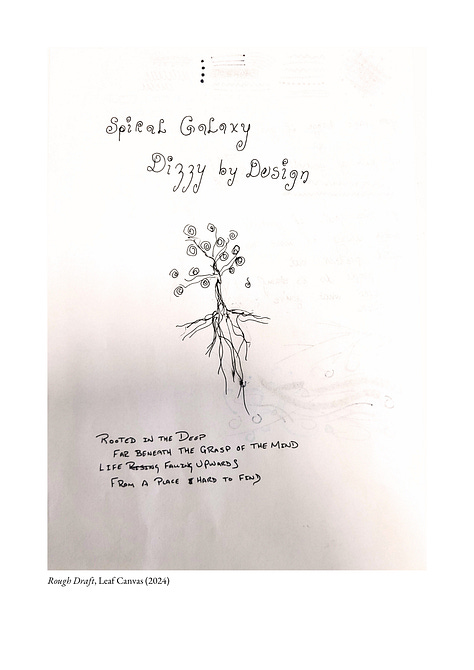Introducing The Dojo
high school programme for holistic development & self-expression
What is The Dojo?
The Dojo is a high school programme in the core curriculum of Liceum Artes Liberales (LAL) in Warsaw, Poland. The Dojo was inspired by my response to the question of, ‘What is the first principle of education?’.
Where did The Dojo Come From?
During the Covid lock-down, I came to discover myself as the object of investigation. I began to move again; stretching, crawling, spinning, punching, straining, swinging, and that’s the short list. I explored my breath in every way possible, from pranayama to Qi Gong, Wim Hof to James Nestor, David Blaine and through methods of my own creation. I meditated on flame, water, soil, air, and void. These expressions of investigation were far more profound for me than the continuous diet of knowledge I had been consuming and distributing in my classrooms.
The project is you!
At the time, I was responsible for coordinating, mentoring, and teaching the newly-launched Year 9 programme in Akademeia High School. While the school operates within a strict curricular structure, I had been afforded freedom to create, and was provided well-designed facilities to do so. I began to practice my own teaching style, in conversation with their pedagogical structures. In particular, I was hunting for new solutions to what I felt were problems within education at large. I remain grateful for the leadership, faculty, student-body, and community of that school for providing me with a nurturing ecosystem to establish the foundation of my own practice.
Growing Downwards
In a most-wonderous flow of events, I ended up helping to establish a primary school in the jungle of Costa Rica. My experience of building curricula, and adapting to the physical and emotional needs of five to ten year-old students shifted my perspective in many ways; in particular, constructing timetables with short learning modules that were concept driven, flexible, and designed for engagement. I have come to call these learning units, ‘Modular Curricula’. I also ruminated on the ideas of intrinsic vs. extrinsic motivation, experimenting with how to design ecosystems and methods that nurture intrinsic motivation. It felt wonderful to use my body in learning once again; swimming classes in the mornings, skateboarding and surfing in the afternoons, with art and sciences blended together throughout the days. All of these elements have contributed to the design of The Dojo.
The Dojo Classroom Experience
I give considerable thought to the ecosystem of my classroom; designing a space that feels comfortable and calming. The entire floor & seating space is flexible, and is constantly changing according to the needs of the class. I maintain an Only-Water policy.
On the first day of school, students are informed that “The project is you!”. ‘I will provide the structure, and it will be rigid; but, at the core of all activities there will be freedom to express yourselves.’ This freedom may be found in the practice of formatting, copywriting, graphic design, working with your hands, with your bodies, through expression of your voice, through instruments, and always in the formation of your ideas.
School should ‘change at the speed of Life’.
As a principle, we begin each class by working with the body, transitioning through the breath, to the mind. The mind may take the form of ‘campfire’ talks with discourse, research investigations, or composition activities.
I use Modular Curricula to build out my daily lesson plans; each designed under the umbrella of a clear concept, guiding students through a learning experience that results in a submission. Modules are responsive, often created or changed according to the composition, needs and expressions of the cohort. We may roll pastry, strike a boxing bag, do calligraphy on a leaf, or spin until we fall down. These experiences may find expressions in the submission of a poster design, an essay outline, a recipe, or a poem (as examples). Students develop skills to express themselves through the use of tools, and the diversity of experiences form the material from which they compose. I nurture a pedagogy of play, believing that we are at our best when in a posture of joyful intensity.



Student Portfolios
Students are assessed upon their submissions. Each submission adds pages to their portfolio, which are published at the end of each term as an account of their work. In doing so, students increasingly care about the quality of their submissions, as each becomes a part of the body of their published work.
Assessment
All assignments are marked out of ten points. Students are generally assessed upon the categories of: layout, formatting, editing & design; overall quality of work (care & effort); and creative self-expression. All work is completed and submitted in class - there is no homework.
I endeavour to prepare my students for an uncertain future by nurturing their unique potential and competencies for self-expression.
In Summary
I believe that school should ‘change at the speed of Life’. This programme is a synthesis of solutions, my pursuit of a classroom that holds meaning and importance for my students, and for myself. I endeavour to prepare my students for an uncertain future by nurturing their unique potential and competencies for self-expression. I feel that this is the greatest investment that can be made to realise a future of abundance.


